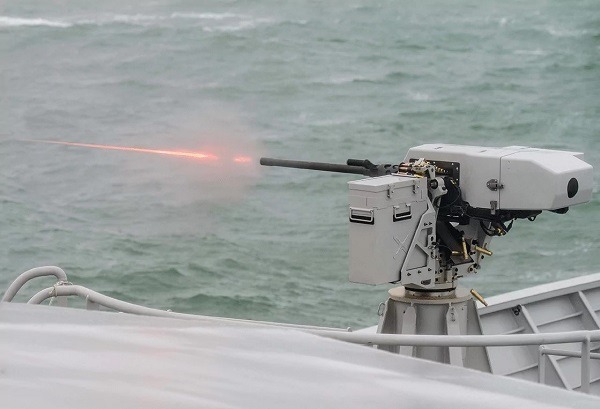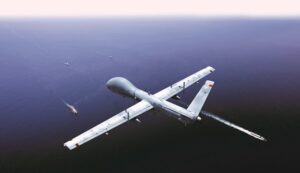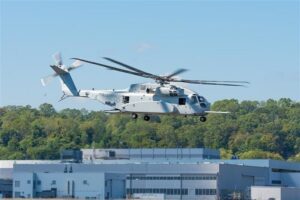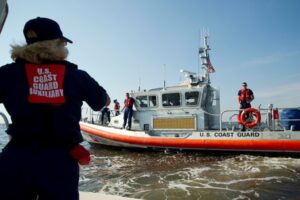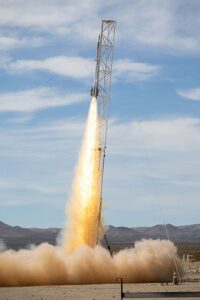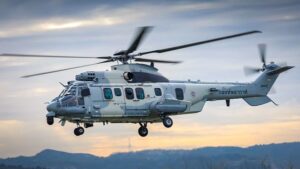New threats at sea: fast, unpredictable and lethal
Aerial and surface drones have literally exploded into the world of naval warfare. They have proven a serious threat to all types of ships, and are not countered efficiently by missiles or large guns. The FN SEA DEFNDER is ideally suited to fit into an effective layered defensive system.
Naval vessels are facing new and very dangerous threats. Naval forces – just like land and air forces – have been confronted by asymmetric threats for many years, but recently they have evolved rapidly, in both quantity and capability. Naval vessels of all types must be prepared to deal with a wide range of scenarios.
The cost trap: why conventional responses no longer work
Previously limited to light, fast boats used by non-state actors such as pirates and terrorists, the threat has taken on a new dimension with the introduction of unmanned surface and aerial systems (USV/UAV drones). In just three years these weapons have proved incredibly effective in the Black Sea, where a powerful fleet has been neutralized by an adversary that has no ships. The deployment of such systems will not be limited to forces that have no other choice, they will be integrated by major powers into carefully designed attack packages alongside high-performance systems. By employing a large quantity of varied threats they can confuse and dilute the defensive capabilities of the target. Using high tech/high-cost missiles against large numbers of low-cost threats will impose a huge financial penalty, and risks emptying magazines, leaving nothing to engage incoming high-performance missiles and aircraft. To match the different levels of threat, naval vessels need a tiered defensive capability.
A decisive layer of defence: FN SEA DEFNDER
The FN SEA DEFNDER navalised remotely operated weapon station can be fitted with the world reference 12.7x99mm NATO (.50 Cal) machine gun with its high firing rate of 1,100 RPM. Available with a choice of day/night camera, rangefinder, target tracking and gyroscopic stabilisation it can be operated from a protected position and offers vastly greater capability than crew-served weapons. Large numbers of surface and high angle airborne targets can be engaged for prolonged periods. The .50 Cal cartridge is low cost, easy to source being used worldwide by many different forces, and is manufactured by almost all major producers of military small arms ammunition. It is highly effective, even against hard targets. Among the many different types of projectile available there is the FN APEI-169 Armour Piercing Explosive Incendiary with exceptional destructive capability. The reduced weight and size of the ammunition allows large quantities to be carried. The FN machine gun can engage out to depending on the target. It does not have a minimum engagement range, and is not affected by electronic counter measures or decoys. Its high rate of fire creates a dense pattern of shots in a short time, giving a greater hit probability on moving targets.
Operations in the Black Sea have shown that many of the emerging threats simply cannot be countered using complex specialised weapons that were not designed for this type of target. The US Navy in the Red Sea has so far been able to neutralise attacks by expending large numbers of very expensive munitions that have a long lead time and limited production capability to replace them. This is after a few weeks of operations against a militia. The lessons are clear to see, including the need to completely revise threat assessments and for a mix of complementary systems. Less costly weapons that use easily available munitions with a cost per engagement similar to, or less than the target, can not only avoid emptying magazines of high-end systems against low tech targets, but may actually be more effective.
Future-ready protection: modularity as a force multiplier
The FN SEA DEFNDER is a fully developed and tested system, already in service. It has recently been selected for the Dutch & Belgian Mine Counter Measure ships currently entering service, and for the Brazilian Tamandaré class frigates. As naval forces adapt to the rapidly evolving operational context the FN SEA DEFNDER will be a serious contender for both new vessels and retrofitting to existing platforms, from smaller costal patrol craft up to ocean-going support ships and major combat vessels.
The highly modular concept of the FN SEA DEFNDER allows it to evolve and integrate new technologies, and gives the customer the choice of components such as aiming systems that will be easiest for them to procure and maintain in the long term. It provides a very capable and cost-effective defence against a wide variety of threats and is a for the last layer of protection for all type of vessels.

